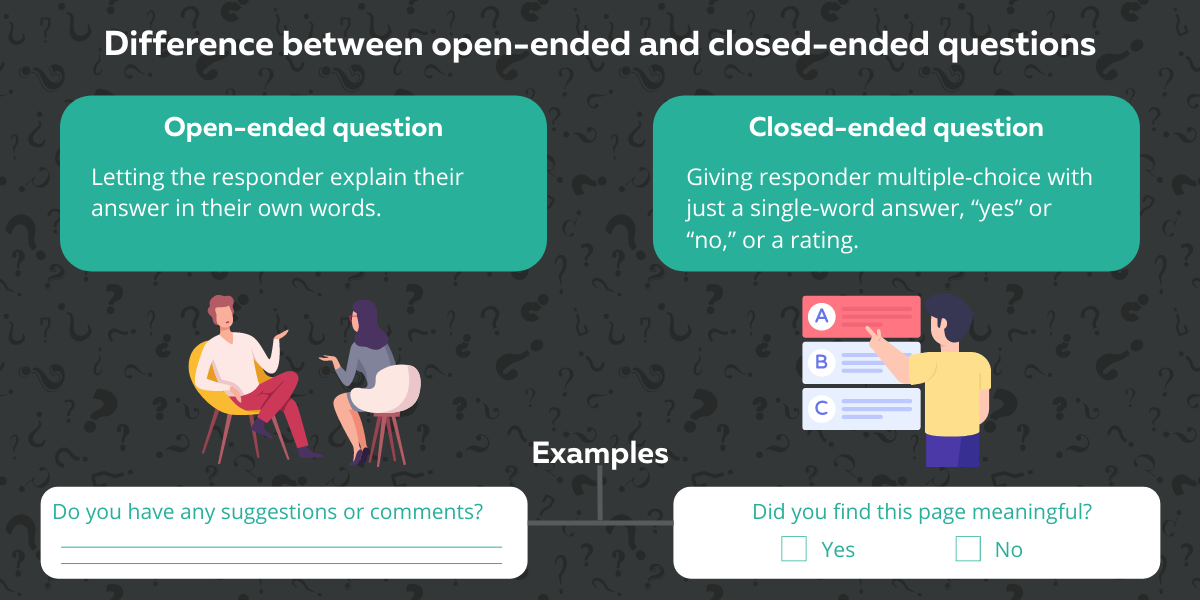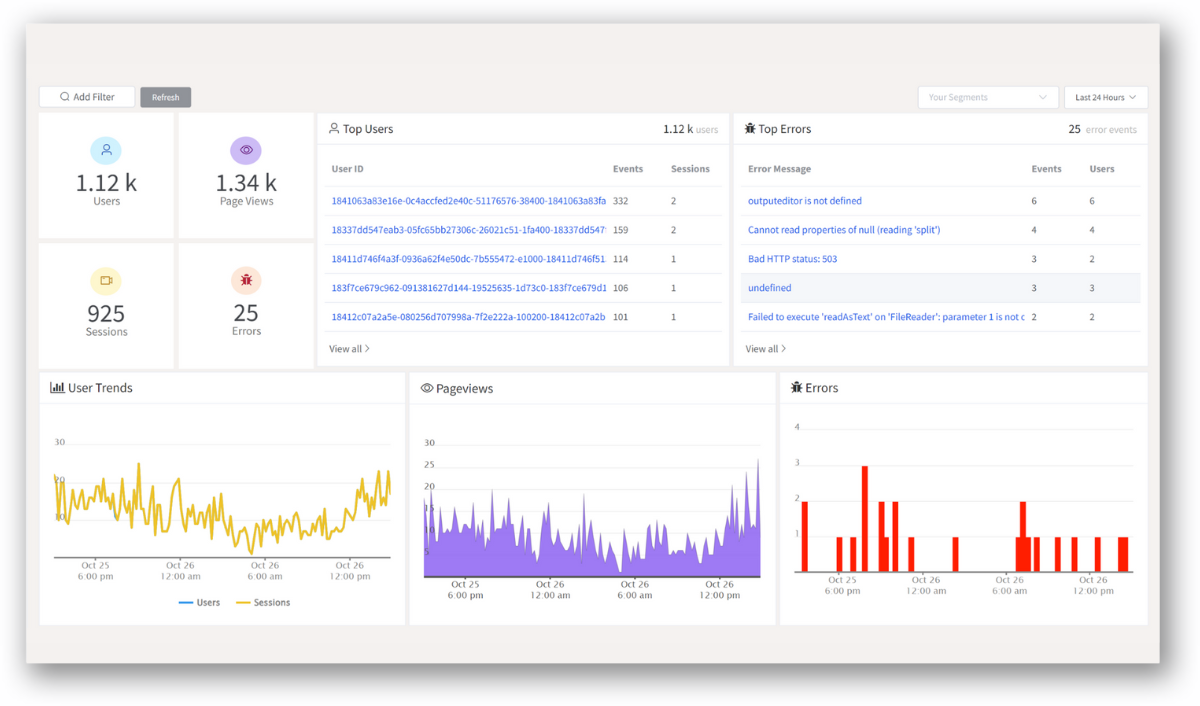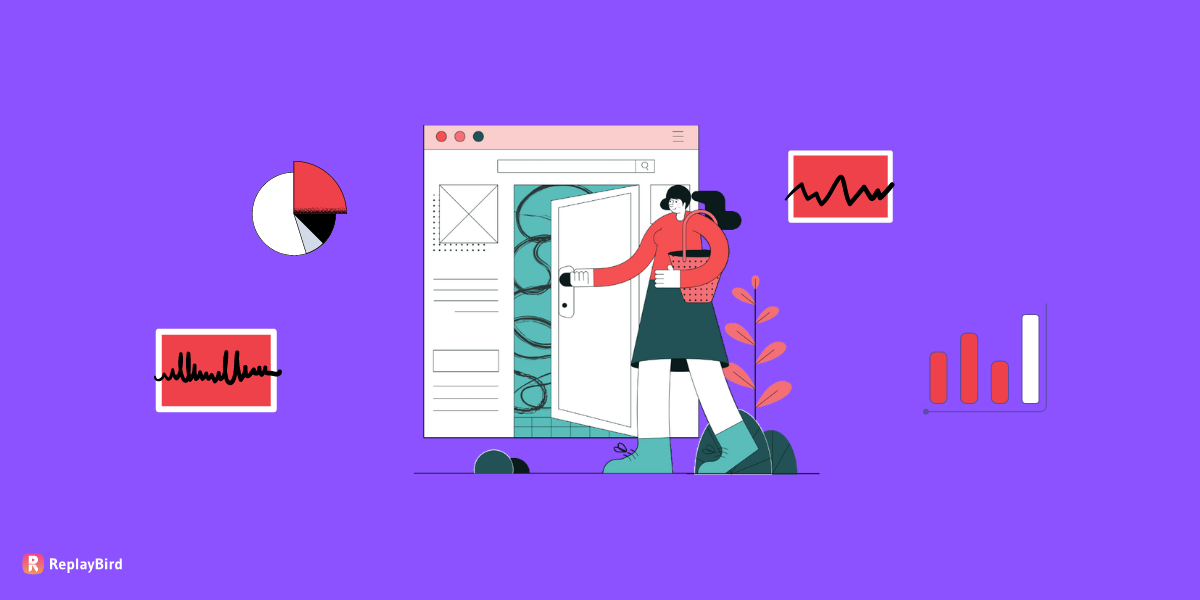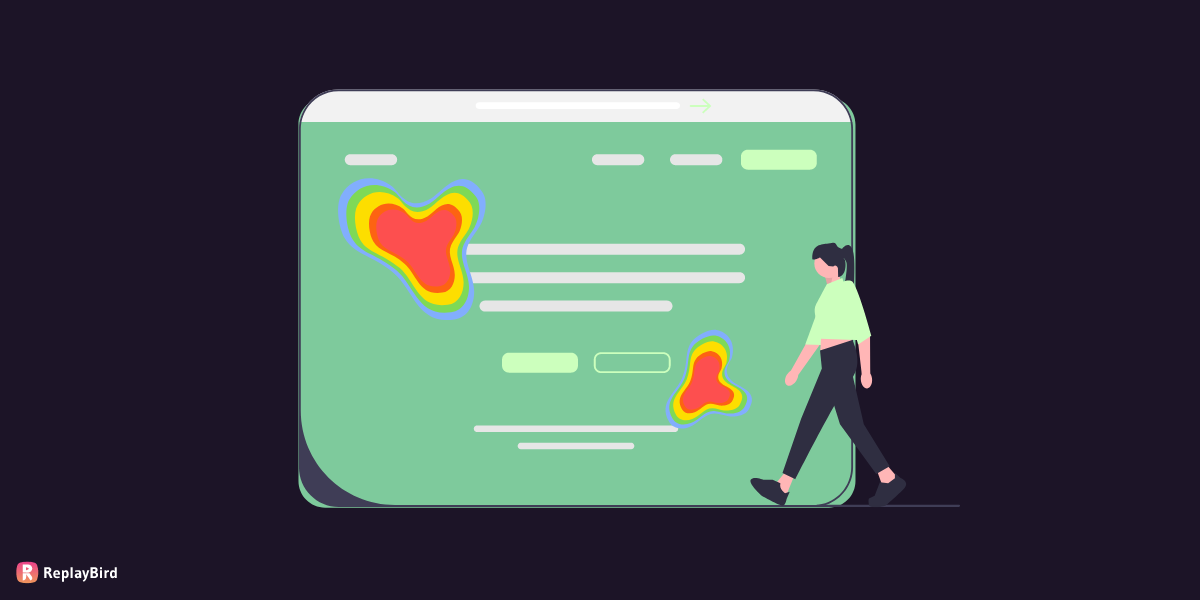The technique with which you phrase the survey question sometimes impacts the type of response you receive.
And among the first considerations, you must make is whether to offer an open-ended question or closed-ended question.
Asking people what they are thinking is still the only way to reach out to what they are thinking.
This is exactly what surveys are for.
Open-ended questions are wide-ranging and respond to specifics in specific ways. For example, “What do you think about this device?”
Closed-ended questions are focused and generally answered with just a single word or even a selection from a limited number of multiple-choice options. For instance, “Are you happy with the results?” (Yes/No/somewhat/average/not quite).
Knowing the distinction between the two allows you to learn to create better survey questions and receive clearer most practical replies.
The examples above focus on open-ended questions and closed-ended questions from the perspective of an online survey. However, the idea is applicable to any form of a survey you might want to conduct.
Difference between open-ended questions and closed-ended questions:
The contrast between open-ended questions and close-ended questions is that open-ended questions let answers respond any way they like.
Whereas closed-ended questions present a defined range of questions from which the responder has to choose.
Now let us look closely at each of these two kinds of inquiries to get a better understanding of them.

What is an open-ended question?
Open-ended questions are those that do not have an easy “yes” or “no” answer and instead urge the responder to explain their comments.
Open-ended questions inquiries allow you to go through everything from the customer’s point of view because you obtain feedback in their own words rather than canned responses.
Spreadsheets evaluate open-ended questions, view qualitative patterns, and even identify features that distinguish them from word cloud visualizations.
What is a closed-ended question?
Closed-ended questions are those that can be answered by choosing from a limited set of possibilities, typically multiple-choice survey questions with just a single-word answer, “yes” or “no,” or a rating.
For example, on the closed-ended question – from strongly agreeing to strongly disagreeing.
The Net Promoter Score® (NPS) question, for example, is among the most prominent closed questions in communications.
By asking consumers “How likely are you to recommend this brand on a scale of 1 to 5?” and calculating total score trends using numerical replies.
When can open-ended questions and closed-ended questions be used?
If you work in marketing, product, sales, or user research, asking the proper survey questions allows you to collect feedback to build better customer experiences and, eventually, improve conversions as well as sales.
As a basic guideline, the type of survey question you ask is defined by your goals:
-
Until you want responses that can be displayed on a chart and used to show trends as well as percentages, request a closed-ended question. Responses to the closed-ended question “Do you understand the results?” for example, will assist you in discovering the proportion of users who understand the terms and conditions of your site versus those who do not.
-
When you wish to gain a better understanding of your consumers and their needs, gain additional information about their behaviors, and/or analyze the causes of customer fulfillment with your service, ask an open-ended question.
For example, the open-ended question “If you could improve anything on this site, what would it be?” encourages your consumers to express themselves in their own words about what they believe you should work on next.
18 top open-ended questions to ask your online customers
You can design surveys that run over the entire website, or you could just simply select to only show them on specified pages (URLs):
- How can we make this page better?
- Did you have any difficulty while using our website?
- What are your main concerns or questions about our product or service?
- What is holding you back from taking action today?
- Which motivated you to act today?
- Do you have any suggestions or comments?
- Did you find this page meaningful?
- Did you face any difficulties in browsing our website?
- If you could change one thing about our website, what would it be?
- What is one thing we could do to make your experience with us even better?
- Is there anything missing from this page?
- Is our pricing clear and detailed?
- How did you hear about us?
- What is your preferred payment/delivery method?
- What feature would you like to see on our website?
- Were you able to quickly find what you were looking for?
- What is holding you back from taking action today?
- Which feature of our website is the most useful?
- Are you having trouble finding anything?
Tips on building survey questions to ask your online customers
- Ask only closed-ended questions.
- Maintain a well-balanced selection of answer options.
- Keep survey question length to a minimum and limit the number of questions.
- While completing the survey, display the survey’s progress.
- Keep your survey questions neutral.
- Keep your survey questions distinct from each other.
- Don’t ask for two things at the same time.
Conclusion:
Surveys are one of the best way to find what is in your customer's mind. Open-ended questions and closed ended questions befit in their own ways, whereas both are going to provide quality data which will be useful in your business.
More than conducting a survey, questions are the lives of every survey. A good survey may change your whole perspective on benefits and value of your every customer.
There are many other ways to understand your customer such as analytics on your websites visitors, session replay, heatmaps, funnel analysis, product analytics.
Use ReplayBird to improve your customer experience.
ReplayBird - Driving Revenue and Growth through Actionable Product Insights
ReplayBird is a digital experience analytics platform that offers a comprehensive real-time insights which goes beyond the limitations of traditional web analytics with features such as product analytics, session replay, error analysis, funnel, and path analysis.
With Replaybird, you can capture a complete picture of user behavior, understand their pain points, and improve the overall end-user experience. Session replay feature allows you to watch user sessions in real-time, so you can understand their actions, identify issues and quickly take corrective actions. Error analysis feature helps you identify and resolve javascript errors as they occur, minimizing the negative impact on user experience.

With product analytics feature, you can get deeper insights into how users are interacting with your product and identify opportunities to improve. Drive understanding, action, and trust, leading to improved customer experiences and driving business revenue growth.





